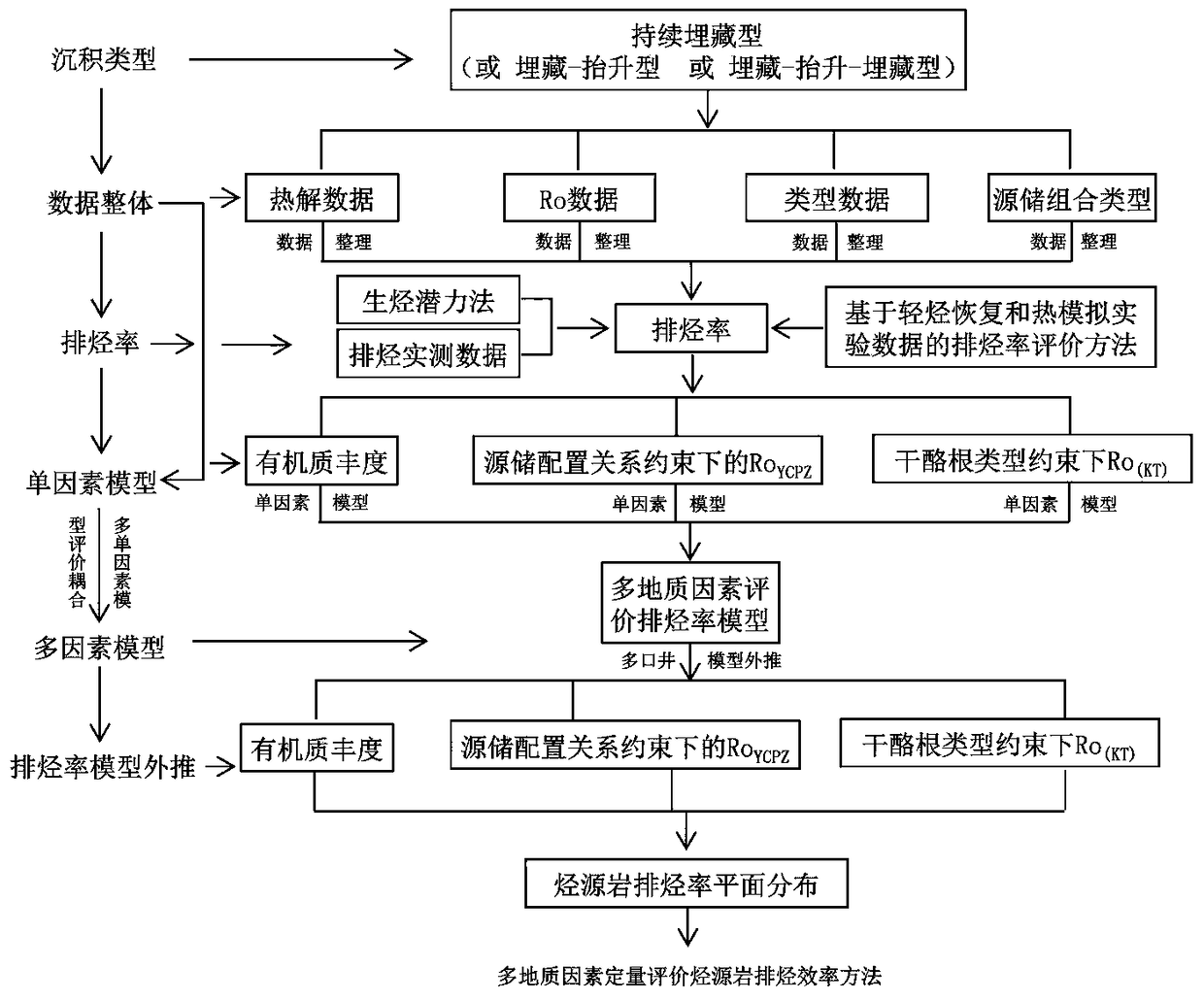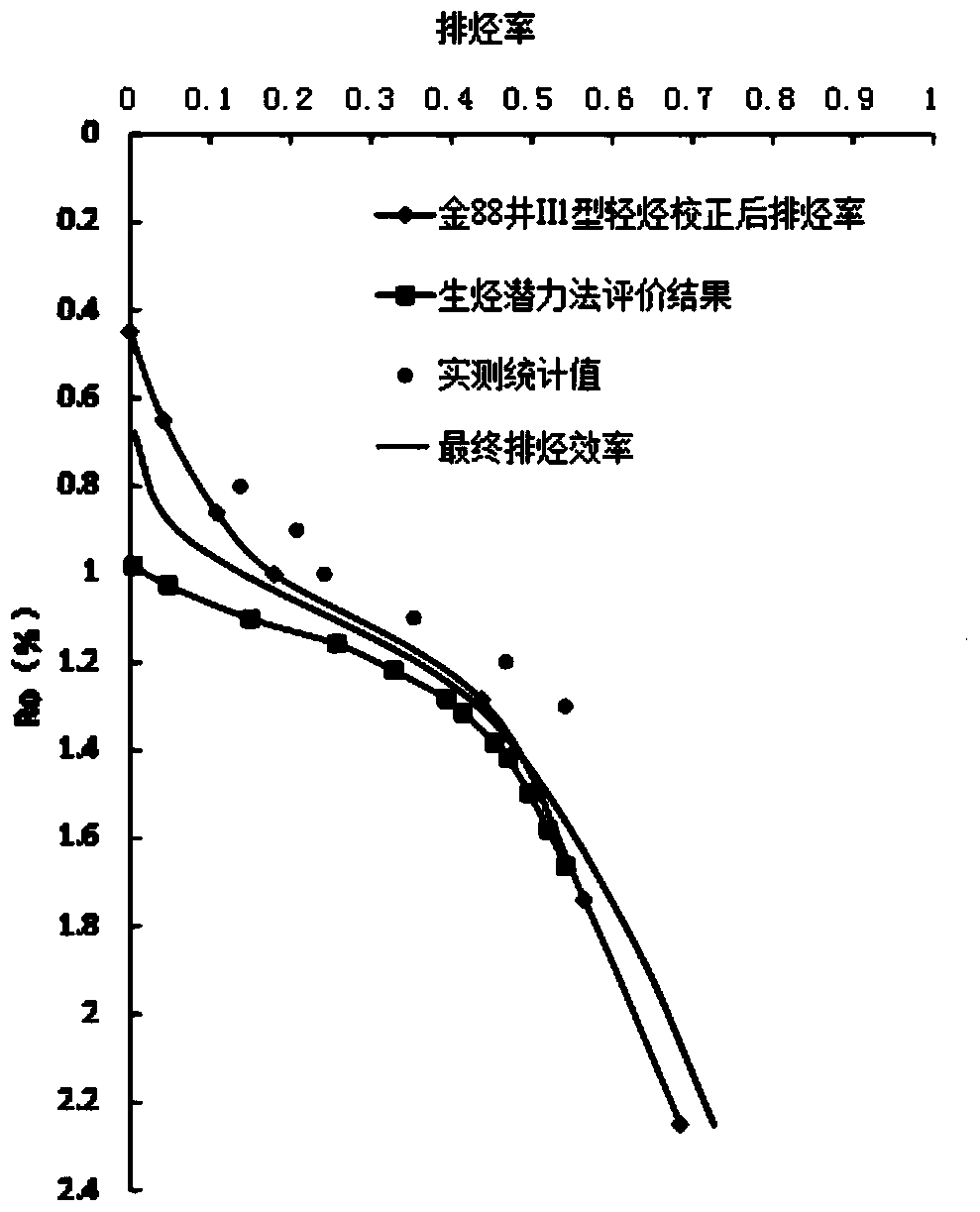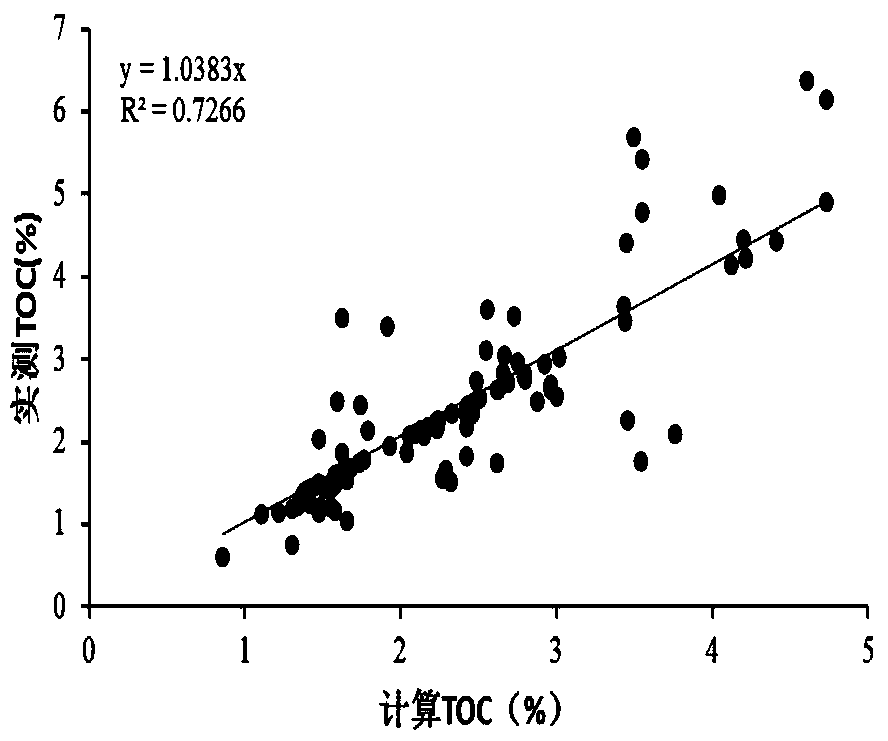A Method for Quantitative Evaluation of Hydrocarbon Expulsion Efficiency Based on Multiple Geological Factors
A quantitative evaluation and efficiency technology, applied in special data processing applications, instruments, electrical digital data processing, etc., can solve the problems of not considering the hydrocarbon expulsion efficiency of source rocks, increasing scientific research costs, scientific research operation cycle, and long operation cycle.
- Summary
- Abstract
- Description
- Claims
- Application Information
AI Technical Summary
Problems solved by technology
Method used
Image
Examples
Embodiment 1
[0052] Embodiment 1: as figure 1 , figure 2 , image 3 , Figure 4 , Figure 5 , Figure 6 , Figure 7 , Figure 8 , Figure 9 , Figure 10 , Figure 11 , Figure 12 , Figure 13 , Figure 14 , Figure 15 , Figure 16 , Figure 17 , Figure 18 , Figure 19 , Figure 20 , Figure 21 , Figure 22 , Figure 23 , Figure 24 , Figure 25 , Figure 26 , Figure 27 , Figure 28 , Figure 29 , Figure 30 , Figure 31 , Figure 32 , Figure 33 , Figure 34 as shown,
[0053] A method for quantitatively evaluating hydrocarbon expulsion efficiency of source rocks with multiple geological factors, comprising the following steps:
[0054] A. Data collection: collect geochemical data, mud logging data, well logging data and geological data in the study area; among them, geochemical data include rock pyrolysis analysis test data, chloroform bitumen "A" analysis test data, organic carbon analysis Test data, kerogen mirror detection; well logging data include ...
Embodiment 2
[0065] Example 2: Taking Qingshankou Formation source rocks in the northern Songliao Basin as an example, using geochemical data, geological data, well logging data and mud logging data as support points, using the application "a quantitative evaluation of hydrocarbon expulsion by multiple geological factors Based on the "efficiency method", a three-dimensional hydrocarbon expulsion efficiency geological body of Qingshankou Formation source rocks was established, and a plane distribution map of hydrocarbon expulsion efficiency was illustrated by taking a certain layer as an example, and the distribution characteristics of conventional and unconventional oil and gas were analyzed. Technical route see figure 1 , the specific steps are:
[0066] (1) Data collection: collect geochemical data, mud logging data, well logging data and geological data in the study area; among them, geochemical data include rock pyrolysis analysis test data, chloroform bitumen "A" analysis test data, o...
Embodiment 3
[0128] Embodiment 3: A method for quantitatively evaluating hydrocarbon expulsion efficiency of source rocks with multiple geological factors, comprising the following steps:
[0129] 1) Collect and organize data: collect geochemical data, mud logging data, well logging data and geological data in the study area; among them, geochemical data include rock pyrolysis analysis test data, chloroform bitumen "A" analysis test data, organic carbon Analysis and test data, kerogen mirror detection; logging data include natural gamma ray, acoustic time difference, microelectrode, micropotential, deep lateral and shallow lateral logging curves; mud logging data include cuttings and mud logging data; geological Information includes sedimentary facies plans;
[0130] 2) Establish a method for evaluating hydrocarbon expulsion efficiency of source rocks: relying on component hydrocarbon generation kinetics, PYGC data, internationally popular PetroMod2014 hydrocarbon generation model sample c...
PUM
 Login to View More
Login to View More Abstract
Description
Claims
Application Information
 Login to View More
Login to View More - R&D Engineer
- R&D Manager
- IP Professional
- Industry Leading Data Capabilities
- Powerful AI technology
- Patent DNA Extraction
Browse by: Latest US Patents, China's latest patents, Technical Efficacy Thesaurus, Application Domain, Technology Topic, Popular Technical Reports.
© 2024 PatSnap. All rights reserved.Legal|Privacy policy|Modern Slavery Act Transparency Statement|Sitemap|About US| Contact US: help@patsnap.com










